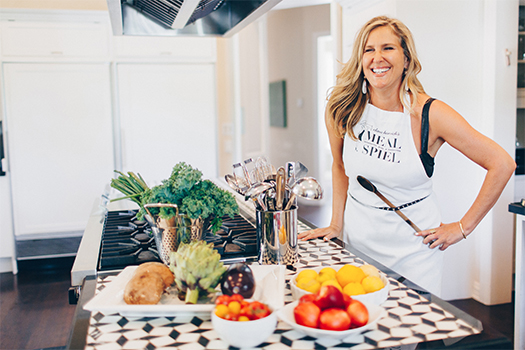How to Choose an Olive Oil

A common question I receive in my cooking classes is which olive oil to choose. This is NOT a no-brainer question.
I can walk into any market, glance at my choices and in a matter of minutes, make my decision. Minutes, yes minutes. Not seconds. Choosing an olive oil takes some time. (Of course once you find a brand you like at your local market, then it takes only seconds.) See the list of my favorite olive oils.
Here are some basic strategies to help you make this choice easy and successful. (This video will also explain it to you.)
- Only buy extra virgin (cold pressed when possible). These terms describe a less processed oil, and hence a fresher, earthier flavor is delivered. Not to mention, these are healthier as they are closer to the natural state of the olive.
- Plan to spend $12-$14 on everyday usage olive oil. You don’t want to spend a fortune on oil you cook with, but you also want it to be of high quality so your food will taste good. Higher quality olive oils have pronounced aromas and flavors. (See rule #3 regarding olive oil you use raw.)
- Have a “special occasion” olive oil (that you do not heat/cook). It’s a treat to have some really high quality olive oil on hand to drizzle on top of pasta, soups, bruschetta and crostini, etc. These cost more and make wonderful gifts.
- Always choose olive oil in a dark bottle. Olive oil is light sensitive and when you are choosing a brand you are unfamiliar with, there is a much better chance you will hit the jackpot when choosing from producers that are protecting their oil in dark bottles.
- Choose an olive oil from a specific region. The more specific the region, the better the olive oil, usually. Italian olive oil will have olives from all over the peninsula, but Tuscan olive oil will use olives only from Tuscany, hence the quality is more controlled.
- Light Olive Oil is useless. Olive oil is not just about unction, oiliness, it is about flavor. You are not saving calories by buying light olive oil, you are simply sacrificing flavor.
- Choose family owned, smaller or boutique brands (when possible). There is a recent controversy that some oils which claim to be 100 % olive oil are actually mixed with lesser vegetable oils. You can avoid this by buying from smaller companies. You can learn more from this New Yorker article.
- Ultimately buy what you like. I often tell people to buy olive oil from the origin of the cuisine you cook. Making Italian food? Buy Italian oil. Making Spanish food? Buy Spanish oil. That said, many Italian olive oils use olives from neighboring countries, so it is most important to use what tastes best to you. I mostly cook Italian food, yet I find California olive oils to be exceptional. I like that they make a less environmental impact during transport since they simply have less distance to travel in order to reach me.
TAGS: bruscetta, cooking, extra virgin olive oil, olive oil, pasta



 :
: 